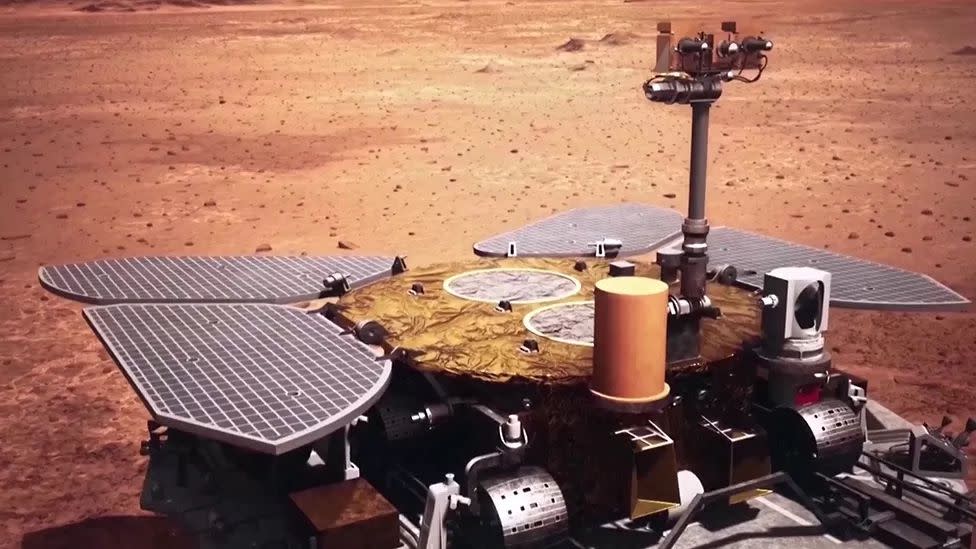A Mars Rover Discovered Bizarre Underground Polygons. What Could They Mean?

"Hearst Magazines and Yahoo may earn commission or revenue on some items through these links."
For one Earth year, the Chinese rover Zhurong explored beneath the surface of Mars using its ground-penetrating radar.
A new study has shown that the rover uncovered polygonal wedges 35 kilometers underground—the first ever found below the planet’s surface.
Evidence suggests that the wedges formed 3.7 to 2.9 billion years ago due to serious climatic changes in Mars’ past.
On May 14, 2021, China became the second country to ever deploy a rover on the Martian surface. Named Zhurong after the ancient Chinese god of fire, the rover landed on Mars’ Utopia Planitia—the largest impact basin on Mars (and the entire Solar System for that matter).
Equipped with a ground-penetrating radar system, Zhurong quickly got to work and far outlasted its originally planned three-month mission—it eventually shut down in May 2022 after a little more than an Earth year on Mars. In that time, the rover gathered invaluable data about what’s going on beneath the Martian surface, including surprising polygonal shapes located 35 meters below.
This previously unknown geologic structure—along with what it says about Mars’ past—was detailed in a recent study, published in the journal Nature Astronomy, written by scientists at the Institute of Geology and Geophysics under the Chinese Academy of Sciences.
“The … formation mechanism for the buried palaeo-polygonal terrain requires a cold environment and might be related to water/ice freeze–thaw processes in southern Utopia Planitia on early Mars,” the paper reads. “The detected buried polygons, which indicate that freezing occurred at low-to-mid latitudes, require strong palaeoclimatic variability.”

While never before discovered underneath the surface, these polygonal structures on Mars aren’t exactly a new discovery, as Universe Today explains. For example, NASA spotted them on the surface of the red planets’ northern lowlands back in 2012, saying at the time that “scientists study polygonally-patterned ground on Mars because the occurrence and physical characteristics of the polygons helps us understand the recent and past distribution of ice in the shallow subsurface [and] also provide clues about climate conditions.”
Similarly interested in what “clues” these shapes could uncover, scientists used Zhurong’s data to detect 16 polygonal wedges within 1.2 kilometers. They estimate that these shapes formed during the Late Hesperian—Early Amazonian epochs (yes, Mars has epochs, too), which occurred roughly 3.7 to 2.9 billion years ago. These wedges formed “possibly with the cessation of an ancient wet environment,” according to the paper.
One thing the researchers are certain about is that such a formation would require cold temperatures. “The possible presence of water and ice required for the freeze–thaw process in the wedges may have come from cryogenic suction-induced moisture migration from an underground aquifer on Mars, snowfall from the air or vapor diffusion for pore ice deposition,” the paper says.
While today’s Mars seems like a uniform, desert-like planet, evidence of dynamic history can still be found etched on its surface—and many meters beneath.
You Might Also Like

